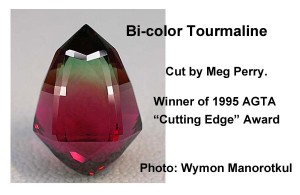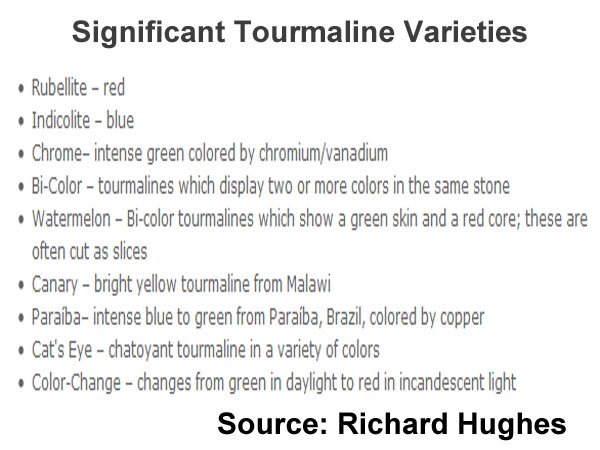 The CIBJO, the World Jewellery Confederation, has announced that its third annual gemological mini-conference in May will focus on tourmaline.
The CIBJO, the World Jewellery Confederation, has announced that its third annual gemological mini-conference in May will focus on tourmaline.
Tourmaline is a mineral group that includes gemstones of many colors sourced on all five continents. It is available to the trade, including pearl and bead stringers, in a variety of forms including round beads, briolettes, nuggets, etc.
If you string pearls and beads, chances are you’ll either include tourmaline in your designs or be asked to work on jewelry which includes tourmaline.
The CIBJO will bring together some of the top gemologists in the world to discuss the various gemological properties of tourmaline in an effort to educate retailers and gemologists. In the meantime, here are a few facts that might be of interest. Please feel free to print this out for reference.
- It’s important to understand that “tourmaline” refers to a mineral group, not to a single gemstone. There are 14 different minerals within the tourmaline family but in gemology we don’t use individual species names, instead we simply call all of them “tourmaline.”
- Nevertheless, there are important varieties within the tourmaline family that you should be familiar with. These include “rubellite” or red tourmaline, “Indicolite” or blue tourmaline, and “watermelon” tourmaline, the pink and green that is probably tourmaline’s most familiar variety. I’ve included a list of important tourmaline varieties below.
- Tourmaline is the most colorful of all gemstones. It occurs in all colors, including white, blue, red, green, yellow, orange, brown, pink, purple, gray, black and is also multi-colored.
- Tourmaline has a hardness of 7.0 – 7.5 on the Mohs Scale making it suitable for a variety of jewelry.
- Almost all red and pink tourmalines will show eye-visible inclusions. Inclusions are also common in green tourmaline. The most common inclusions in tourmaline are fractures and needle inclusions. Fractures reduce the strength of the gemstone.
- Tourmaline is sourced all over the world. In the United States, tourmaline is mined in California and Maine. This fact has been of great interest to my clients in the past.
Tourmaline is one of the most interesting and beautiful of gemstones. Its price can range from very expensive to very inexpensive. Use care when buying tourmaline beads, especially beads that are small, say, 6 mm and under. Examine them closely for eye visible inclusions. They’ll often be there, especially in inexpensive strands, and will be a signal that you may lose some of them during the manufacturing process.


